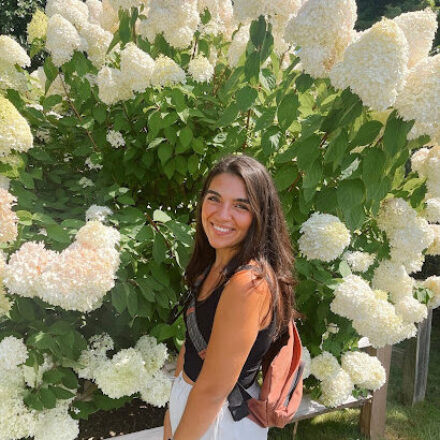Ariana Castillo
Graduate Student, Visiting Scholar at the University of Oklahoma

“I study how air moves on a large scale using applications of atmospheric chemistry and dynamics to understand future climate trends.”
Ariana’s passion for meteorology/ atmospheric science started early. Instead of cartoons, she preferred watching the Weather Channel on Saturday mornings and declared, “I want to be a meteorologist!” by kindergarten. By the end of her first year in the meteorology program at Texas A&M University (Class of ’19, whoop!), she realized she did not want to be on TV all while detesting chemistry, physics, and calculus. Ironically, she loved atmospheric chemistry, dynamics, and thermodynamics – it turns out that the ‘hard stuff’ is much more interesting when applied to the atmosphere! After interning at NASA for 3 summers, she realized science is fun enough to apply to grad school.
Working with Marianna Linz, Ariana focuses on large-scale stratospheric circulation by looking at the atmospheric concentration of long-lived trace gases, such as N2O, CH4, and SF6, and how they evolve over time to understand how air moves in the stratosphere. In particular, she applies the stratospheric age of air (how “old” air is) and theory tracer interrelationships from satellite and in-situ observations of trace gases. Since climate models predict that the stratospheric circulation is accelerating due to a warming climate, confirming if the stratospheric circulation is changing with observations is pivotal for future climate projections and impacts. In her work, she aims to help answer this question by comparing climate model output of trace gas concentrations to satellite and in-situ observations to diagnose discrepancies in models. Additionally, Ariana is exploring the use of stratospheric tracers in the context of paleoclimate, particularly the Last Glacial Maximum. While finishing her dissertation work, she is a Visiting Scholar at the University of Oklahoma’s School of Meteorology under Cameron Homeyer to cultivate additional interests in troposphere-stratosphere interactions caused by meteorological phenomena, particularly stratospheric injections via convective thunderstorms and wildfire smoke plumes.
Beyond research, Ariana loves to teach and has won an award based on student reviews through the university. She is active in the American Meteorological Society (AMS) as a student member in the Committee of the Middle Atmosphere, the AMS Committee for Hispanic and Latinx Advancement Committee (CHALA) as a student and academia ambassador, and the AMS Accessibility Committee where she advocates for underrepresented people in her field and spreading awareness of mental health and non-apparent disabilities. In addition, she also won the Outstanding Student Presentation Award for her work at the AMS 22nd Conference on the Middle Atmosphere.
When not immersed in her code and satellite data, Ariana enjoys staying active and being outside with long walks, training for long-distance races, trail running, hiking (when it’s not too cold), and also weightlifting. A proud Latina and Texan, she cherishes keeping in touch with loved ones, and enjoys recreating cultural dishes from scratch – enchiladas, salsas, tacos. When in doubt, she always has coffee or a good book in her hand.
Contact Information
arianacastillo@fas.harvard.edu

